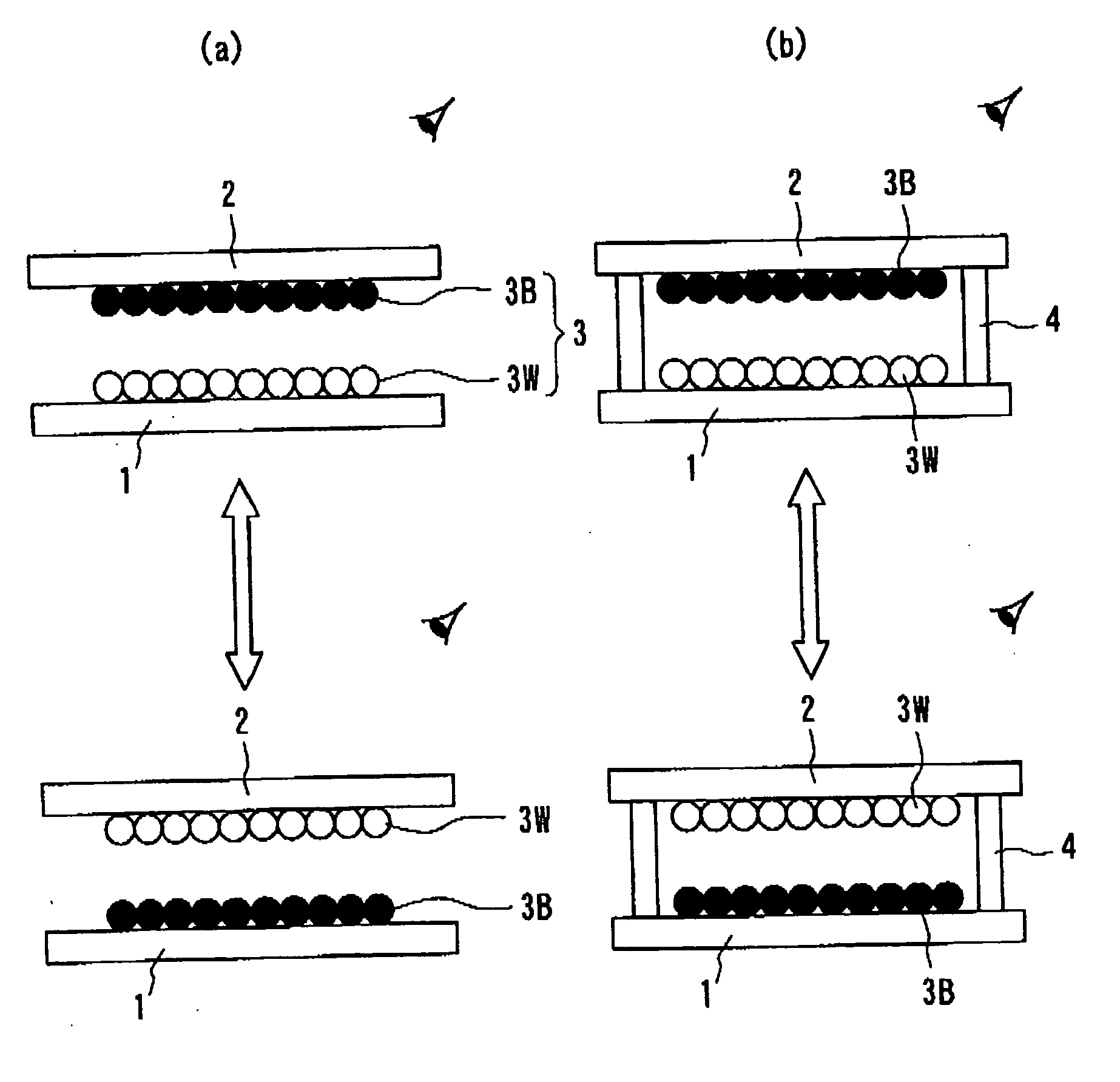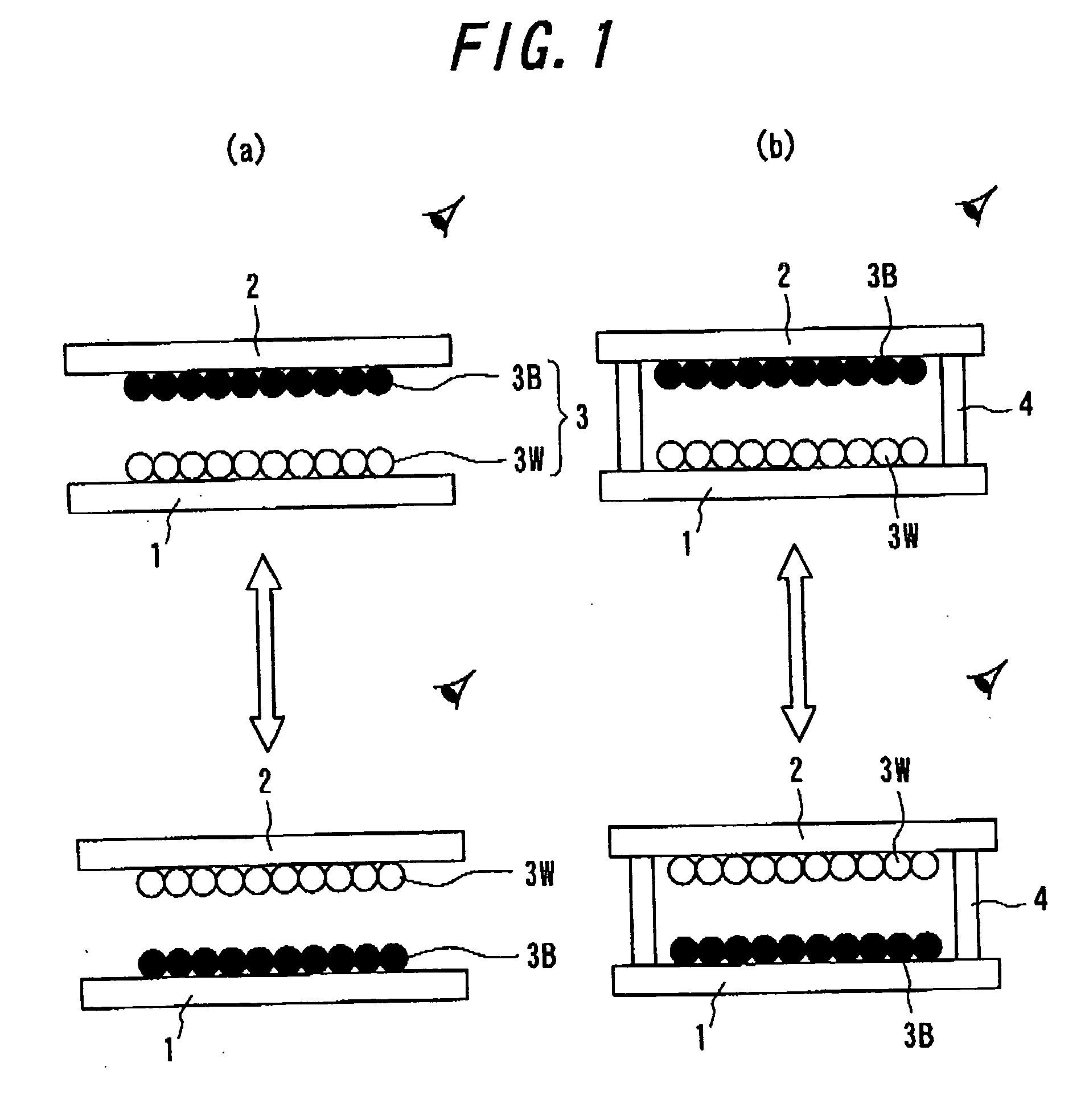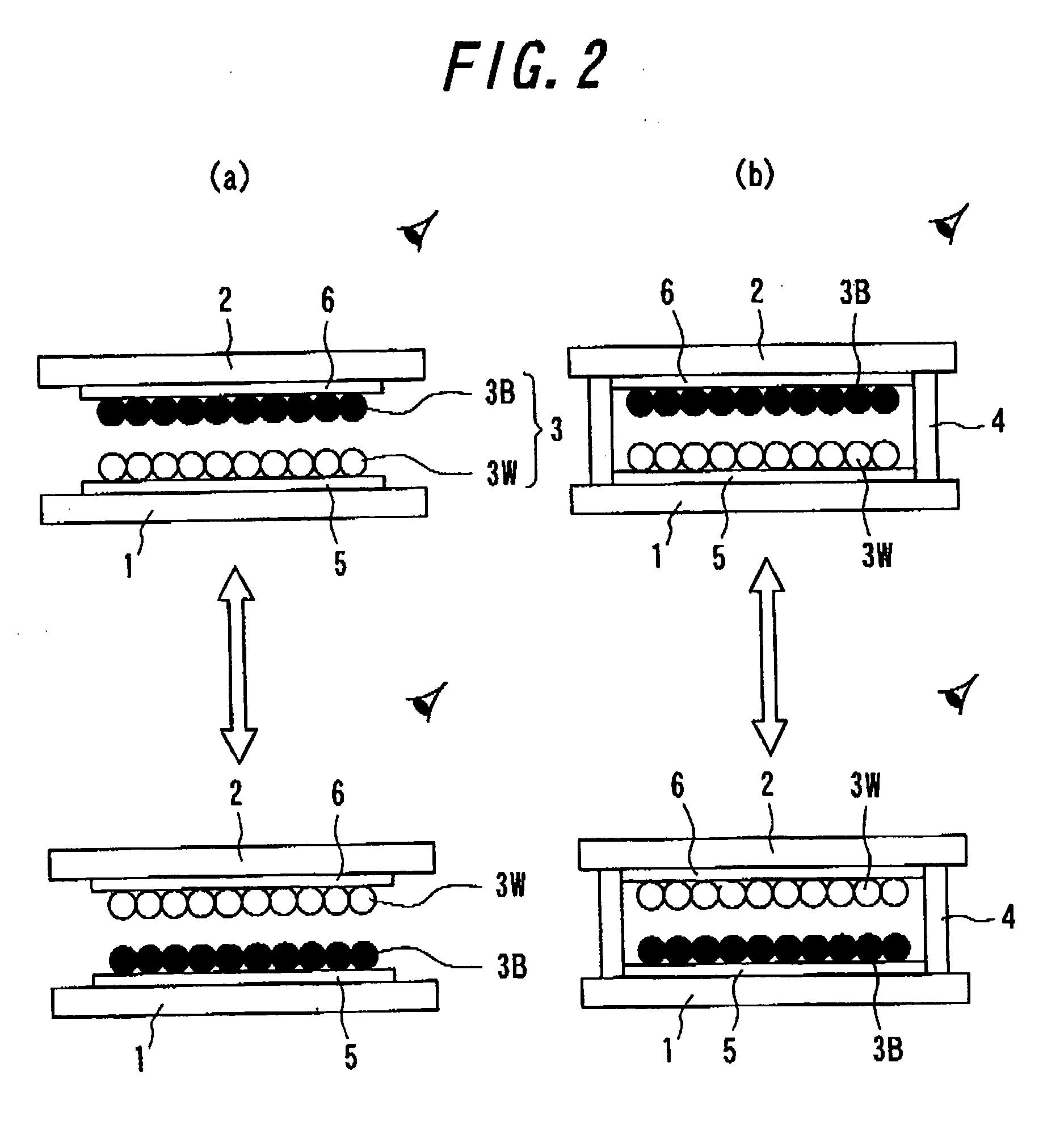Method of Driving Information Display Device
a technology of information display and display device, which is applied in the direction of static indicating devices, instruments, etc., can solve the problems of lack of imaging repetition stability, slow response rate, and difficulty in maintaining a stable dispersion sta
- Summary
- Abstract
- Description
- Claims
- Application Information
AI Technical Summary
Benefits of technology
Problems solved by technology
Method used
Image
Examples
embodiments
[0133]Hereinafter, the present invention will be explained further specifically with reference to the examples according to the second and third aspects of the invention, but the present invention is not limited to the following examples.
[0134](Examples of the Second Aspect of the Invention)
[0135]As an index for evaluating the method of driving the information display device according to the second aspect of the invention, margins of the contrast and the driving voltage were defined by performing the following experiment.
1. Experimental Method
[0136]In order to measure an effect of the cross-talk, reflectance of a display state was measured by varying a voltage in a method such that a most simple test pattern was displayed by using various driving methods.
1.1. Test Pattern
[0137]The test pattern displayed by a passive matrix driving method is shown in FIG. 13. In FIG. 13, (a) is a solid black pattern region, (b) is a solid white pattern region and (c)-(f) are regions being influenced ...
example 1
[0166]In the driving method of the example 1 shown in FIG. 21, a pulse was applied two times as a row selected voltage, while a column rewriting voltage was the same as the known one. In this embodiment, pulse voltages on cross-talk 1 to 3 and cross-talk 4 to 6 applied to a non-writing pixel have the same polarity. That is, a polarity of the cross-talk 1 and 6 is constant in such a manner that one peak is 0V and the other peak is −V1; a polarity of the cross-talk 2 and 4 is constant as +V1; and a polarity of the cross-talk 3 and 5 is constant as −V1. However, a peak-to-peak value of the rewriting voltage applied to a pixel is a half of the rewriting voltage (V2−V1). Therefore, a contrast is maintained as an excellent state, but an effect for an object of varying a dividing number of the applied pulse voltage from one time to plural times is reduced.
example 2
[0167]In the driving method of the example 2 shown in FIG. 22, use is made of a pulse train in which row / column is synchronized, and a pulse is removed when row is selected. In the case such that a bias voltage is not ½ of the driving voltage, an applied voltage after removing the pulse is not sometimes 0V. In this embodiment, pulse voltages on cross-talk 1 to 3 and cross-talk 4 to 6 applied to a non-writing pixel have the same polarity. That is, a polarity of the cross-talk 1 and 6 is constant as 0V; a polarity of the cross-talk 2 and 4 is constant in such a manner that one peak is +V and the other peak is 0V; and a polarity of the cross-talk 3 and 5 is constant in such a manner that one peak is 0V and the other peak is −V1. In the example 2, the cross-talk is influenced in such a manner that an improving effect of the example 1 is maintained as it is and a peak-to-peak value of the rewriting voltage is two times larger than that of the example 1. Therefore, a rewriting operation o...
PUM
 Login to View More
Login to View More Abstract
Description
Claims
Application Information
 Login to View More
Login to View More - R&D
- Intellectual Property
- Life Sciences
- Materials
- Tech Scout
- Unparalleled Data Quality
- Higher Quality Content
- 60% Fewer Hallucinations
Browse by: Latest US Patents, China's latest patents, Technical Efficacy Thesaurus, Application Domain, Technology Topic, Popular Technical Reports.
© 2025 PatSnap. All rights reserved.Legal|Privacy policy|Modern Slavery Act Transparency Statement|Sitemap|About US| Contact US: help@patsnap.com



